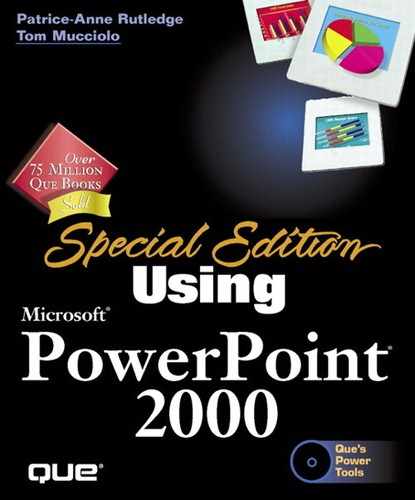Understanding Charts in PowerPoint
In PowerPoint, you can use the Microsoft Graph application to create powerful charts in your presentation or you can insert charts created in another application such as Excel. Using Microsoft Graph from within PowerPoint is the easiest alternative if you need to create a chart from scratch and don't need to apply Excel's calculation and formula cap- abilities to your chart data. If you've already created a chart in Excel or you need to analyze complex data, then inserting an Excel chart is the best solution.
In addition to the common chart types such as column, bar, line, and pie, you can also create doughnut, radar, cone, bubble, stock, and other chart types.
Tip
For help in using Microsoft Graph, choose Help, Microsoft Graph Help. This opens the help file specific to this application.
Before you start creating a chart using Microsoft Graph from within PowerPoint, you should become familiar with the terms associated with charts. Table 9.1 lists these terms and their definitions.
Figure 9.1 shows some of these chart objects.
To determine what each object is in a chart, place the mouse on that object or part of the chart and a chart tip displays its name. Figure 9.2 shows an example of a chart tip with the name and value for a data series.
Note
Only the data series displays a numeric value.
If the chart tip doesn't display, activate Microsoft Graph by double-clicking the chart; choose Tools, Options; and verify that the Show Names and Show Values check boxes are selected on the Chart tab of the Graph Options dialog box (see Figure 9.3).
Figure 9.1. Learn the basic objects of a chart before you create one.

Figure 9.2. This chart tip lets you know the name of the chart object as well as its value.

Figure 9.3. PowerPoint displays names and values in chart tips by default.

